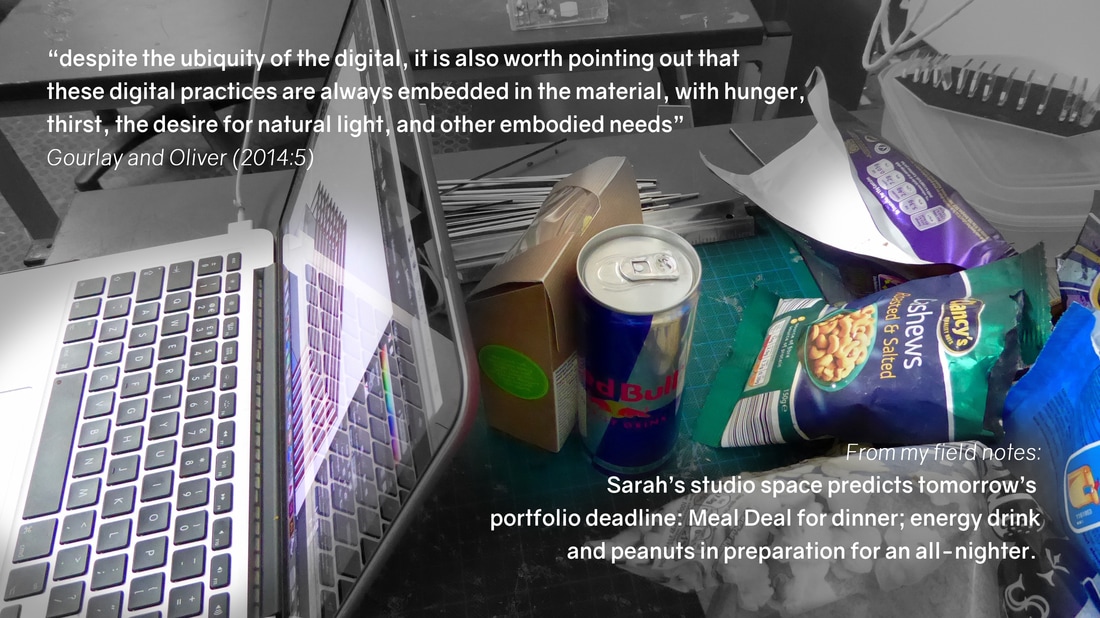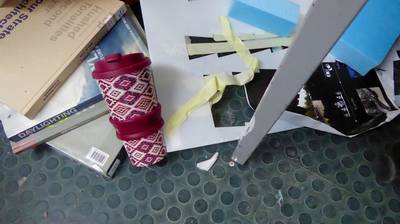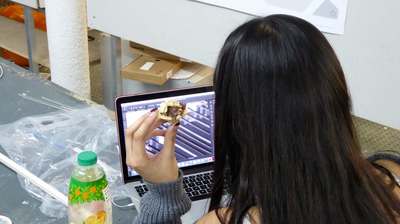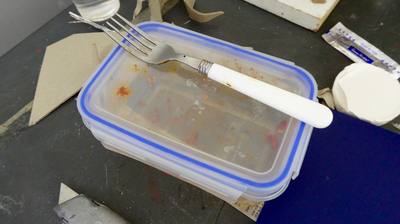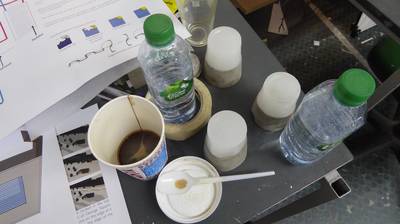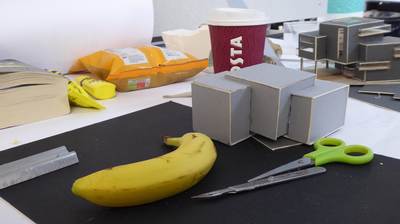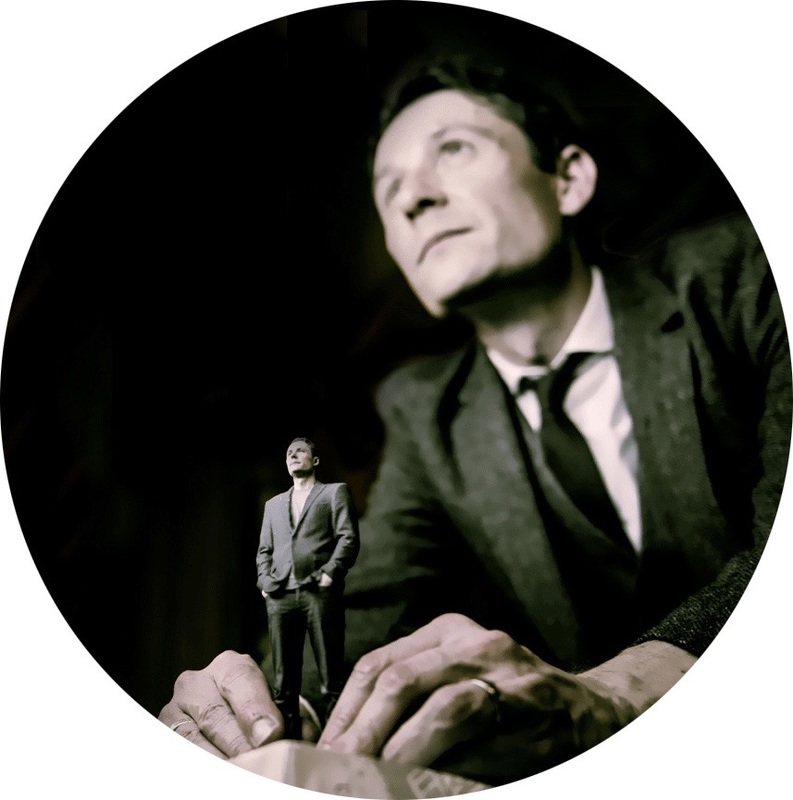|
Over the last year I have taken thousands of photographs whilst observing students and tutors from Edinburgh University's Architecture programme. At the beginning of this exercise I was mostly interested in recording what took place directly around assessment: preparing the portfolio, presenting work in a review exercise, practices around marking and moderation. Over time though I have sought to capture a broader range of phenomena as I have looked towards sociomateriality as the critical lens for my Doctoral research. From initially focusing on the meaning making rituals of students and tutors around assessment, I have instead been looking to the ways that knowledge construction in the Architecture studio is a more complex entanglement of human, technological and other material interests. Or as Fenwick and Landri describe in their work around sociomaterial assemblages in education:
If I was initially guilty of viewing assessment in an overly simplistic way, as a fairly clear-cut exchange between student and tutor, sociomaterial critiques of education have instead encouraged me to examine the messy reality of what takes in and around the classroom, where 'learning is embedded in action and emerges through practice, processes that produce the objects and characteristics of educational events.’ (Knox and Bayne 2013). In this way assessment can be seen as a performance that depends on the student and tutor, but also looks to the role of curriculum, technology, sound, light, clothing and other visible and invisible actors within an evolving pattern of materiality (Fenwick et al 2011:8). What this has meant in practice is that, as well as continuing to photograph students and tutors in the Architecture studio, I have pointed my camera down at the floor and upwards to the ceiling. I have crawled under desks and balanced on chairs. I have photographed and recorded the sounds of ventilation shafts, data projectors, corridor conversation. I have attracted troubled glances from students unfamiliar with my research. Without having yet commenced my analysis of the gathered data, a recurring theme to emerge from my photographs and also my written field notes, is the way that food and drink seem to be an integral part of what takes place in the studio. Alongside the more recognisable tools of the architecture student we find snacks: pencils next to a packet of peanuts; chocolate alongside cardboard; Rhino with Red Bull. click on image to enlarge Through the image above I have tried to show how my field notes and photographs resonate with some of the principle ideas around sociomateriality within education, in this case echoing work by Gourlay and Oliver (2014) where they offer a sociomaterial account of digital literacy practices:
For the purpose of further illustration I have included below a small selection images which would seem to reiterate Gourlay and Oliver's call to remain alert to the way that our use of digital resources in education, for instance around assessment, is always and inevitably entangled with a much broader range of resources, influences, limitations and opportunities beyond the interests of the assignment task. click on images to enlarge References
See also: Digital sociomaterial journaling Camera, recorder, scissors, brush: ethnography in a pop-up exhibition Architecture, multimodality and the ethnographic monograph
2 Comments
Bo Causer
19/4/2017 07:50:47
Interesting James! I wondered what you were up to in the architecture studio.I've gone in a similar yet different direction, and have just started a PhD in Architecture, studying how the design of explanatory signs educates about and impacts on the perception of buildings. Look forward to reading more of your blog.
Reply
James
19/4/2017 10:10:32
Thanks, Bo. I'll be really interested to read more about your PhD. Will you be sharing details of your research at all? I've really enjoyed my time in the Architecture school over the last year - it has been fascinating (perhaps especially so as an 'outsider'). All the best and do stay in touch.
Reply
Leave a Reply. |
Search categories
All
I am a Lecturer in Digital Education (Education Futures), within the Centre for Research in Digital Education at The University of Edinburgh.
@james858499 [email protected] |
